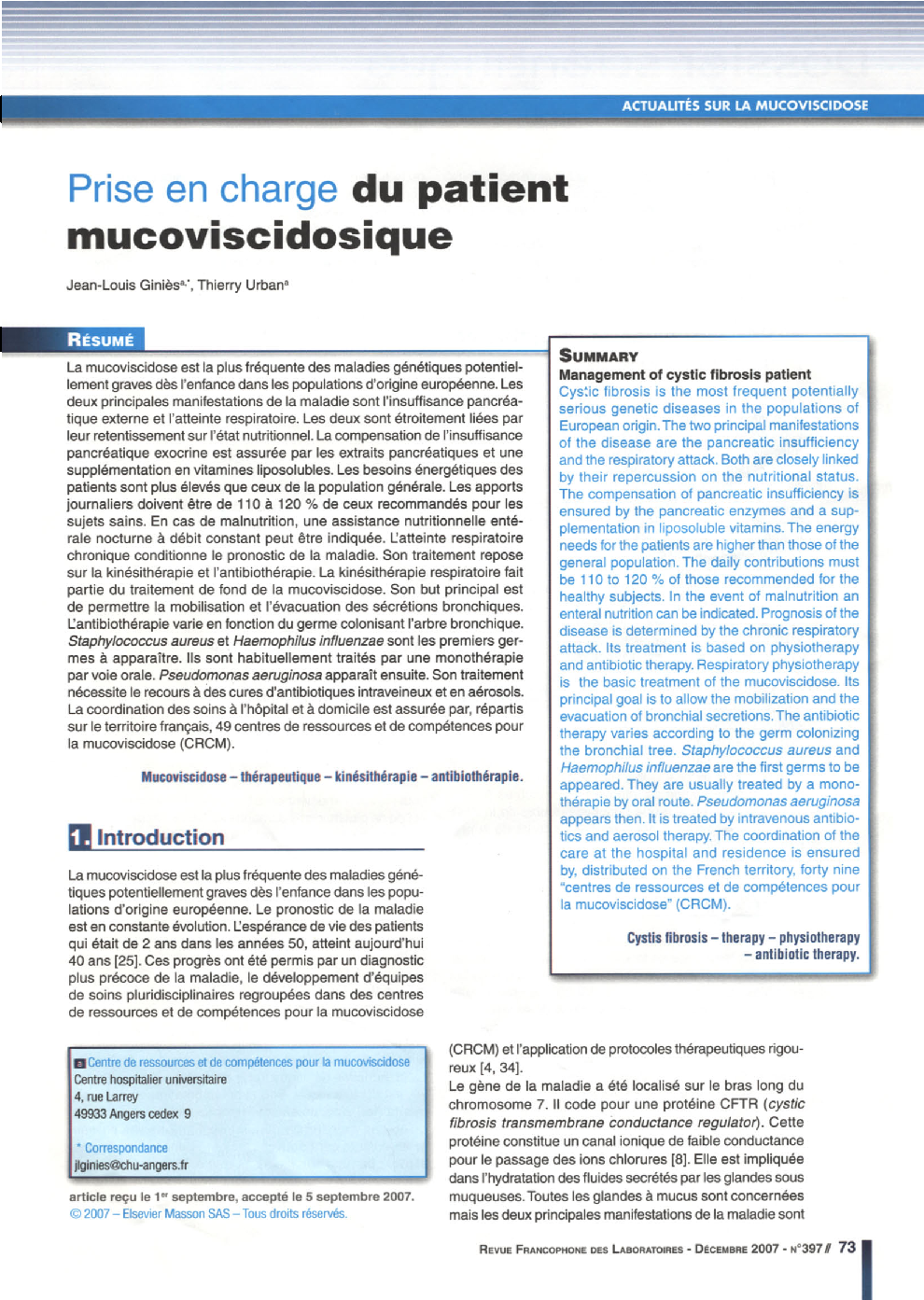| Article ID | Journal | Published Year | Pages | File Type |
|---|---|---|---|---|
| 7664283 | Revue Francophone des Laboratoires | 2007 | 5 Pages |
Abstract
Management of cystic fibrosis patient Cystic fibrosis is the most frequent potentially serious genetic diseases in the populations of European origin. The two principal manifestations of the disease are the pancreatic insufficiency and the respiratory attack. Both are closely linked by their repercussion on the nutritional status. The compensation of pancreatic insufficiency is ensured by the pancreatic enzymes and a supplementation in liposoluble vitamins. The energy needs for the patients are higher than those of the general population. The daily contributions must be 110 to 120 % of those recommended for the healthy subjects. In the event of malnutrition an enteral nutrition can be indicated. Prognosis of the disease is determined by the chronic respiratory attack. Its treatment is based on physiotherapy and antibiotic therapy. Respiratory physiotherapy is the basic treatment of the mucoviscidose. Its principal goal is to allow the mobilization and the evacuation of bronchial secretions. The antibiotic therapy varies according to the germ colonizing the bronchial tree. Staphylococcus aureus and Haemophilus influenzae are the first germs to be appeared. They are usually treated by a monothérapie by oral route. Pseudomonas aeruginosa appears then. It is treated by intravenous antibiotics and aerosol therapy. The coordination of the care at the hospital and residence is ensured by, distributed on the French territory, forty nine “centres de ressources et de compétences pour la mucoviscidose” (CRCM).
Keywords
Related Topics
Physical Sciences and Engineering
Chemistry
Analytical Chemistry
Authors
Jean-Louis Giniès, Thierry Urban,
